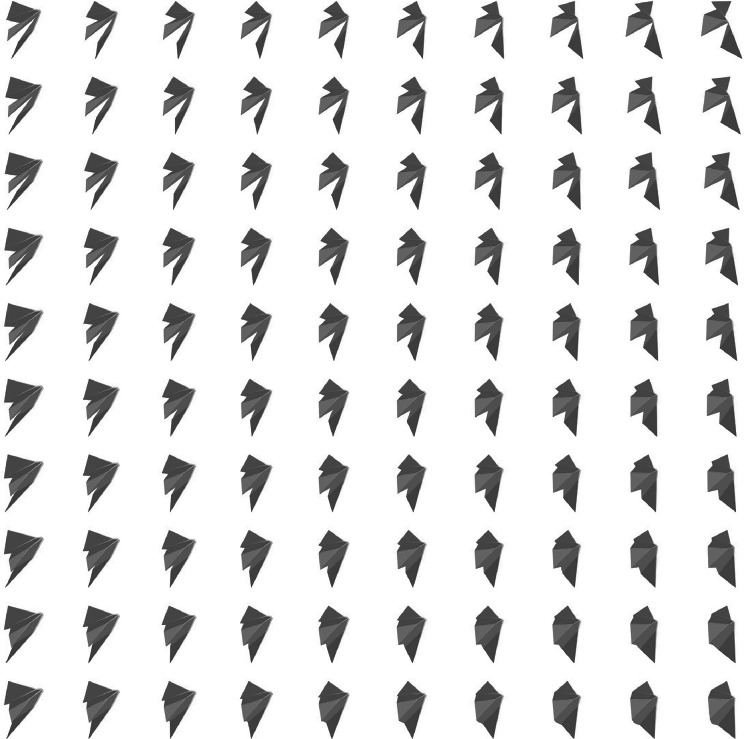- Record: found
- Abstract: found
- Article: found
A predicted developmental and evolutionary morphospace for grapevine leaves

Read this article at
Abstract
Abstract
Using conventional statistical approaches there exist powerful methods to classify shapes. Embedded in morphospaces is information that allows us to visualise theoretical leaves. These unmeasured leaves are never considered nor how the negative morphospace can inform us about the forces responsible for shaping leaf morphology. Here, we model leaf shape using an allometric indicator of leaf size, the ratio of vein to blade areas. The borders of the observable morphospace are restricted by constraints and define an orthogonal grid of developmental and evolutionary effects which can predict the shapes of possible grapevine leaves. Leaves in the genus Vitis are found to fully occupy morphospace available to them. From this morphospace, we predict the developmental and evolutionary shapes of grapevine leaves that are not only possible, but exist, and argue that rather than explaining leaf shape in terms of discrete nodes or species, that a continuous model is more appropriate.
Related collections
Most cited references31

- Record: found
- Abstract: found
- Article: found
SciPy 1.0: fundamental algorithms for scientific computing in Python
- Record: found
- Abstract: not found
- Article: not found
Matplotlib: A 2D Graphics Environment
- Record: found
- Abstract: not found
- Article: not found
